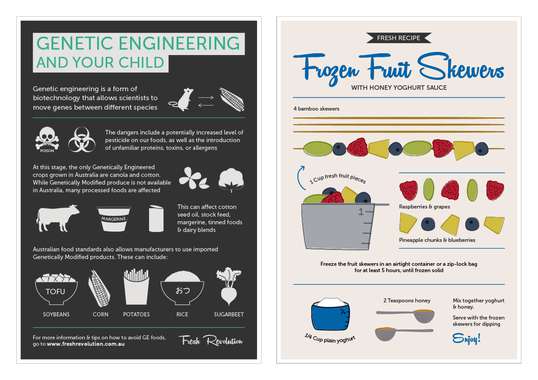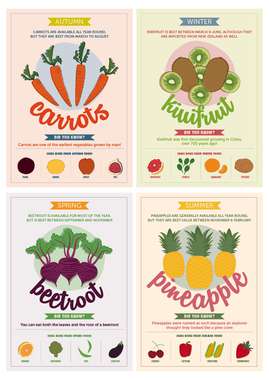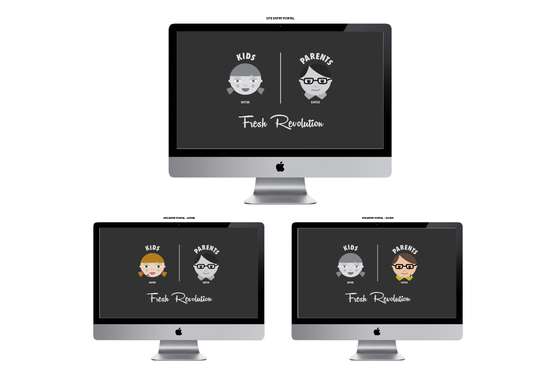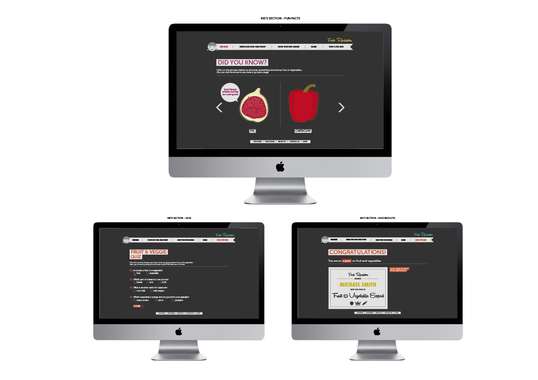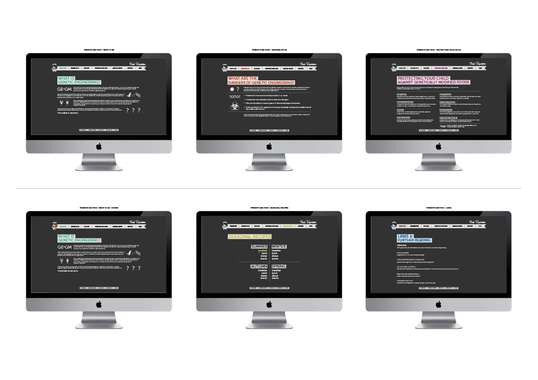Fresh Revolution
Files
This work has not been commented by curators.
Title
Fresh Revolution
Headline
Please view PDF file for a more detailed view of my outcome
Concept author(s)
Natalia Pullen
Concept author year(s) of birth
1992
Concept author(s) contribution
Research, concept & design
Concept author(s) Country
Australia
Friendly Competition
Competition category
Visual communication practice
Competition subcategory
static
Competition field
academic
Competition subfield
student
Subfield description
Griffith University / Queensland College of Art / Bachelor of Design
Check out the Food Democracy 2013 outlines of Memefest Friendly competition.
Description of idea
Describe your idea and concept of your work in relation to the festival outlines:
Before commencing my visual response to the provocation of food democracy, I conducted research into the many issues relating to the topic. The broad and intriguing nature of the philosophy of food democracy was a complete eye-opener for me as a young designer, as well as a consumer. I had previously very little knowledge as to what food democracy was, let alone the far-reaching consequences of the loss of global food choice. During my research, one particular Greenpeace article caught my attention – “Chinese children used in US-backed GE food trial” (see reference below). The article tells of an experiment of Genetically Modified ‘Golden Rice’ on a group of Chinese children between the ages of six and eight years of age. This article presents what I believe to be a wide angle shot of the problems surrounding our loss of food democracy – the greed and the attempt of large-scale hijacking of the global agribusiness industry by large corporations, and a complete lack of concern for the public’s health and safety, worsened even by the use of young children who are unable to defend themselves in terms of their rights and choices. Golden Rice’s propaganda-like claim to fame is that it is an answer to Vitamin-A deficiency among mal-nourished children, a problem that already has a solution – overcoming poverty in order to access a diverse diet (Tan 2012). Golden Rice’s purpose seems in fact to be the very opposite of this – maintaining poverty and henceforth control over the poverty-stricken population by forcing this product in order for them to become reliant upon an illegitimate solution to their very real problem.
It is here that I began to consider some less-direct forms of corporate control over the World’s children – particularly in the form of persuasive junk food advertising. I believe that the multi-national corporations behind these products are capturing the market of the future decision-makers of the World, effectively brainwashing and planting the seeds for an unsustainable and monopolised world where corporations have even more control than they do at present. I conducted some research into the effects and success of advertising targeted at children, with some alarming results. Up to 30% of all ads during kid’s peak television viewing times are for food, and 50-80% of these promote ‘energy-dense, nutrient-poor foods’ (Mehta et al. 2012).
From here I took on a project with an alternative take on food democracy, aiming to introduce the ideas surrounding food democracy and food security early on in life. The aim of my campaign is to educate children at a critical time in their life, and provide them with the tools and understanding to question the normalcy of global corporate culture. As part of this undertaking, my product also aims to educate parents as to the dangers and presence of Genetically Engineered foods, henceforth attacking corporate control. The campaign is centred around the need to choose fresh food over processed foods.
References:
Tan, Monica 2012, Chinese children used in US-backed GE food trial, viewed March 2 2013, <http://www.greenpeace.org/international/en/news/Blogs/makingwaves/chinese-children-used-in-genetically-engineer/blog/41960/>.
Mehta, K, Coveney, J, Ward, P, Magarey, A, Spurrier, N & Udell, T 2012, ‘Australian children’s views about food advertising on television’, Appetite, vol. 5, no. 1, pp. 49-55, viewed 6 March 2013, <http://www.sciencedirect.com/science/article/pii/S019566631000084X>.
What kind of communication approach do you use?
In my work I have decided to use a friendly and non-confrontational approach to the education of issues such as Genetic Engineering and corporate control, which is appropriate to my target audience (young children and their parents). While these issues have the potential to insight passionate responses, I wanted to introduce the concept of food democracy in an easily accessible and non-confrontational manner. My campaign aims to create awareness of the problems with our global food supply chain, and to be the catalyst for parents to begin their own research and exploration of a new way of thinking about food. For children of a young age, my aim is to plant the seed for a different kind of global food future, to counter-act the bombardment of advertising on today’s children. There are three parts to my outcome, posters, a flyer and a website. The four posters are specifically for young children, and are designed to be displayed in primary school classrooms and other educational environments. The flyer is a take-home flyer to be given to children to take home to their parents, or directly to parents themselves. The front side gives parents a small snippet of the issues and dangers of Genetic Engineering, whilst the reverse side provides a colourful illustrated recipe suitable for young children to make with their parents – aiming to spawn an interest in cooking and using fresh ingredients rather than processed ones. The most substantial part of the outcome is the website, which is divided into two separate sections – one for parents and the other for children. The children’s section is an extension of the posters and the recipe containing interactive games and information about fresh food. The parent’s section contains significant information regarding genetic engineering, the dangers of such, its presence in Australia, how to avoid it, and further links to appropriate sites.
What are in your opinion concrete benefits to the society because of your communication?
As I have previously mentioned, my campaign is a side step from the widespread issues of food democracy. It is targeted at a local level, where resistance has the potential to take hold and spread. Our youngest generation cannot be discounted as valuable tools in the spread of food democracy, and my outcome shapes this idea. I believe my outcome is a very accessible approach to the communication of food democracy ideas.
What did you personally learn from creating your submitted work?
I have personally become much more aware of my own consumption of food, especially living in a city environment where we are so far removed from the supply chain. I have learnt many hidden facts that corporations conceal from the people, and have been horrified of their actions. I believe I am now a more sustainably conscious food consumer, and have an increased disposition to question the normalcy of corporate consumer culture.
Why is your work, GOOD communication WORK?
My work is good communication practice because it communicates a clear and thoroughly researched, perhaps revolutionary concept. It is not to be added to the mounting pile of meaningless consumption-driven design practice. It communicates to a specific target audience, and is tailor-designed for their needs. I believe it is also visually pleasing – adding to the success in the communication of the concept.
Where and how do you intent do implement your work?
My work is intended to be implemented in the school and other educational environments, specifically in Australian primary schools. The posters would be displayed in schools, possibly even in homes with young children. The flyer is designed to be taken home to parents from schools, providing a variant view and reason of healthy eating of families. The website is appropriate for both children and parents to use, and is clearly segregated in accordance to the two different target audiences. It is designed to be an enjoyable yet informative online experience.
Did your intervention had an effect on other Media. If yes, describe the effect? (Has other media reported on it- how? Were you able to change other media with your work- how?)
As a conceptual piece, my work has not been implemented in a real-world scenario, however I believe it would provide a completely new perspective to children’s eating campaigns due to its focus on Genetic Engineering and corporate control.

